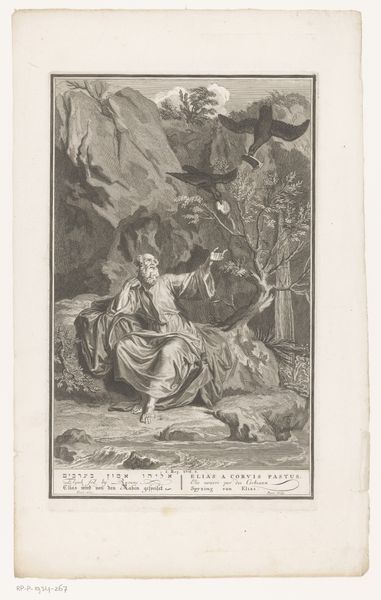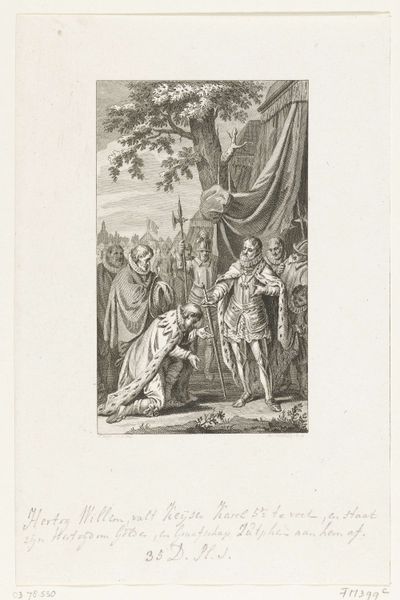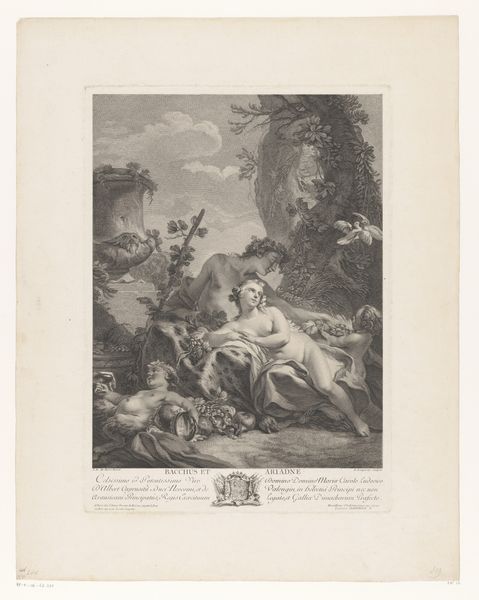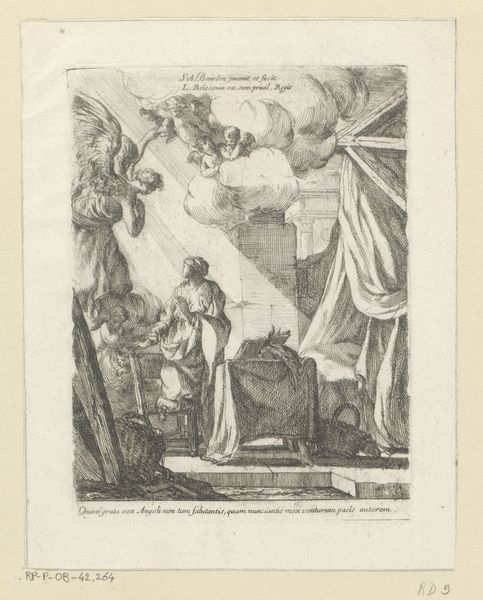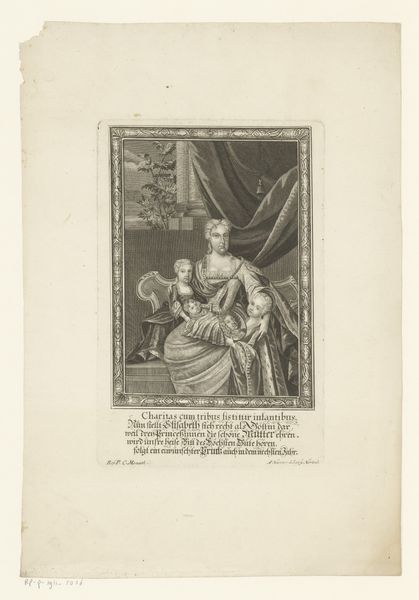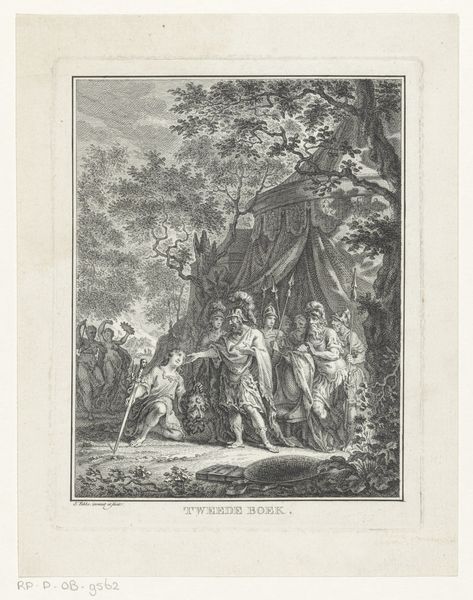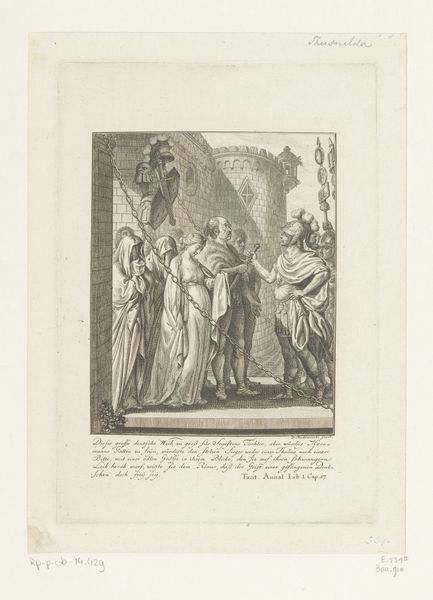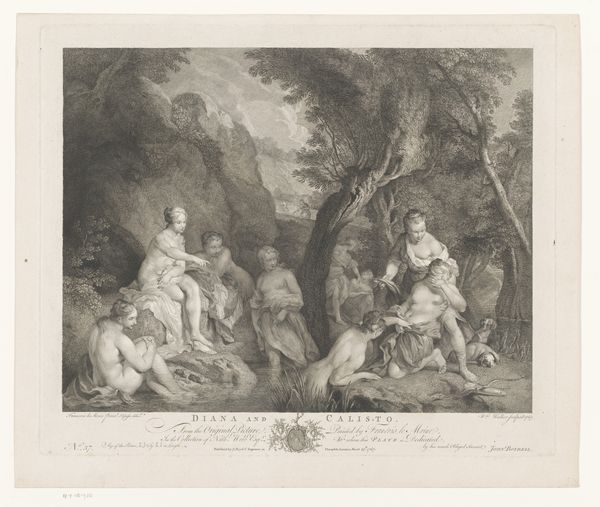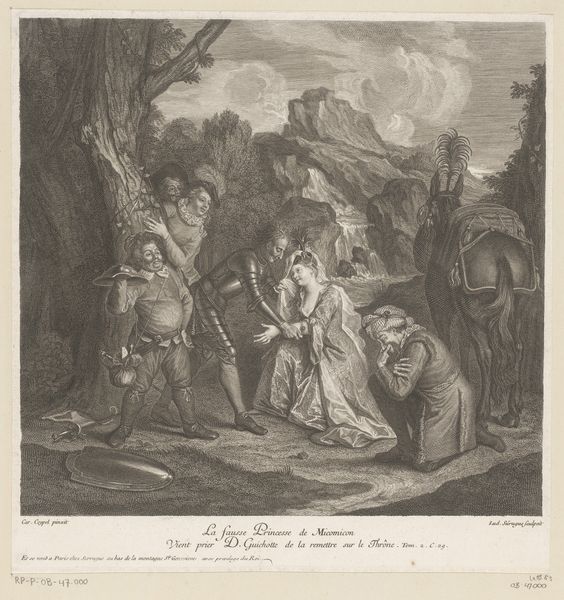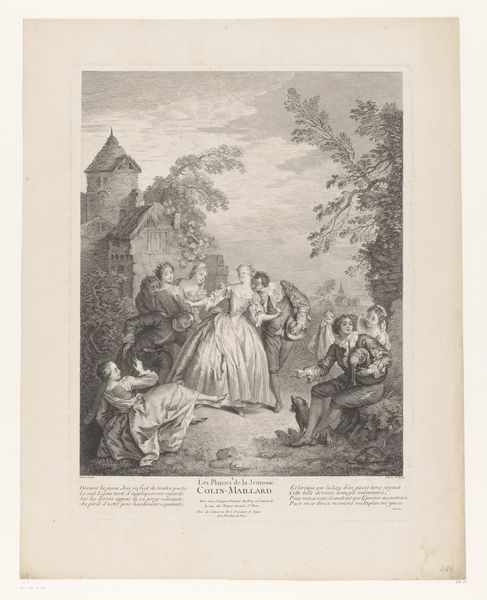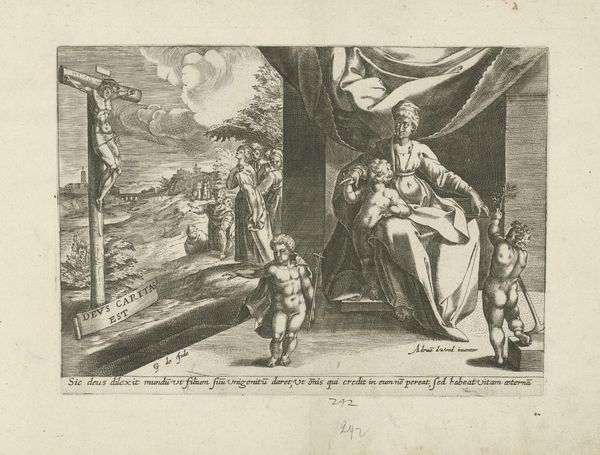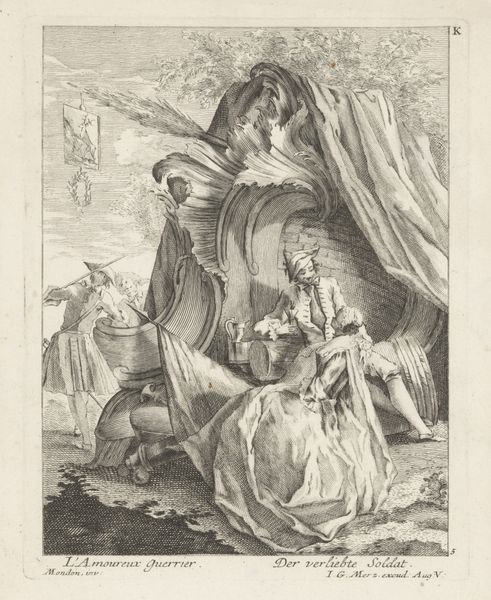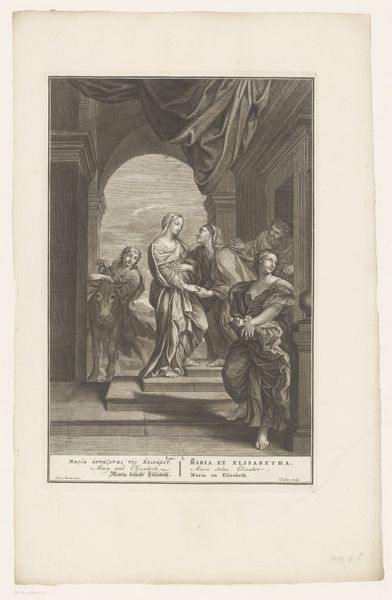
print, engraving
#
baroque
# print
#
old engraving style
#
history-painting
#
engraving
Dimensions: height 332 mm, width 243 mm
Copyright: Rijks Museum: Open Domain
Editor: Here we have Johann Elias Ridinger's "Portret van Maria Theresia, Rooms-Duits keizerin," an engraving from somewhere between 1740 and 1767. The sheer scale of her dress and stature make it a powerful portrait. What do you make of it? Curator: Indeed, it's a study in power, but also of cultural memory. Consider the symbols she presents: the horse, for instance. Beyond mere transportation, what does it evoke for you? What societal role does the equestrian hold? Editor: Authority? Domination, even? The artist positions her above us, literally. And what about the figures surrounding her? Curator: Precisely. Now, let's consider *their* dress, the figures attendant on her… What histories do they hold? Think about visual cues—uniforms, textiles, gestures—what can they tell us? Editor: So, not just about her power, but the groups she ruled over. This isn’t a straightforward depiction of a ruler; it’s about empire itself, almost as propaganda. Curator: And more, propaganda with complex layering! Ridinger, like many artists of the time, played with recognizable symbols to legitimize power through visual tradition. By tapping into our shared understanding of such figures, he aimed to ensure cultural continuity through carefully constructed iconography. The power relies on the viewer accepting this projection of authority! Editor: That’s fascinating. I hadn't considered how the print also relies on *our* cultural memory for its effectiveness. Curator: It is more than a portrait, it's the active formation of collective memory, one carefully etched line at a time. It challenges us to consider the staying power of cultural images. Editor: This makes me look at historical portraiture in an entirely different way. Thanks for sharing your insight!
Comments
No comments
Be the first to comment and join the conversation on the ultimate creative platform.
